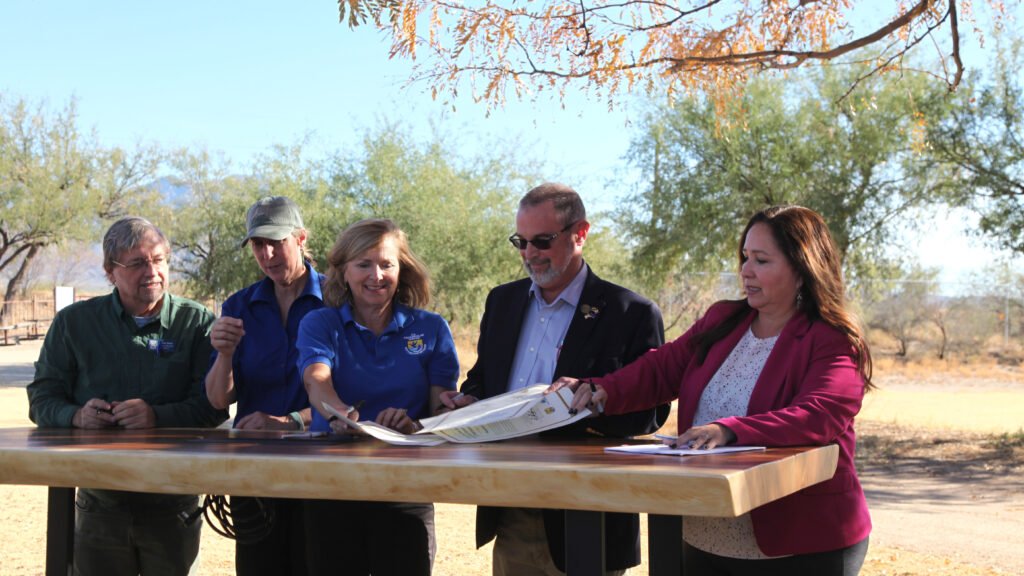New Partnership for Santa Cruz River National Urban Wildlife Reserve
On Thursday, local and federal officials came together at Canoa Ranch in Green Valley to sign a Memorandum of Understanding (MOU). This document formalizes a partnership aimed at establishing the Santa Cruz River National Urban Wildlife Reserve.
This collaboration marks a significant development in Arizona, potentially paving the way for the state’s first urban national wildlife sanctuary.
The team includes representatives from the City of Tucson, Pima County, Santa Cruz County, and the U.S. Fish and Wildlife Service (USFWS).
Besides efforts focused on conservation, this partnership may draw future federal funding for river recovery and protection initiatives.
Adelita Grijalva, chair of the Pima County Board of Supervisors, remarked on the importance of the collaboration. Yet, she noted that shifts in presidential administrations can complicate efforts to secure federal aid.
USFWS Director Martha Williams expressed hope and stressed the agency’s commitment to working with communities on conservation projects. “I don’t foresee this support dwindling. It’s challenging to predict funding, especially with the shifting landscape, but the Fish and Wildlife Department is engaged in the conversation,” she stated.
Appointed by President Joe Biden in October 2021, Williams will step down from her role as director in January.
Amanda McAdams, the local director of the USFWS Southwest Regional Shelter, pointed out that conservation is a long-term concern. “It’s an ideal that many Americans share—protecting endangered species, preserving wildlife, and promoting activities like hunting and fishing,” she noted.
Williams also characterized the partnership as a template for future conservation initiatives.
“The Fish and Wildlife Service wants to foster more urban wildlife areas, creating a community-focused approach to wildlife conservation,” she explained.
The proposed sanctuary will aim to preserve natural resources along the Santa Cruz River, create permanent habitats for wildlife, and enhance public access to outdoor areas.
Grijalva mentioned additional opportunities for collaboration, particularly with the Pascua Yaqui and Tohono O’odham Tribal Nations and nearby municipalities.
“This partnership safeguards the environment while inviting the community to witness its potential,” Grijalva remarked.
Amy Lueders, the USFWS Southwest Regional Director, praised the collaboration as a substantial initial step. “This represents a critical effort to unify all stakeholders and leverage our collective passion for the area,” she said.
In September, the USFWS released a plan focused on local habitat conservation and approved two landscape designs in conjunction with the Santa Cruz River Evacuation Coalition. They also conducted community planning events to gather public input.
Looking ahead, McAdams mentioned that the partnership intends to expand its network of stakeholders and organize future engagement activities. “Our objective is to enhance conservation efforts and ensure that local voices are heard in shaping what conservation means here,” she concluded.







